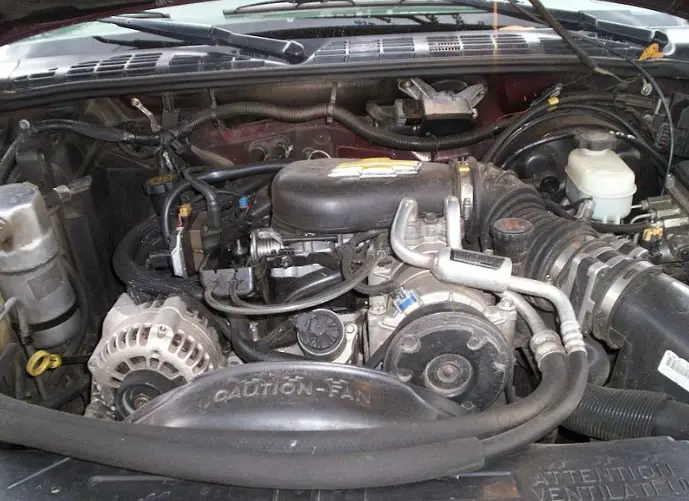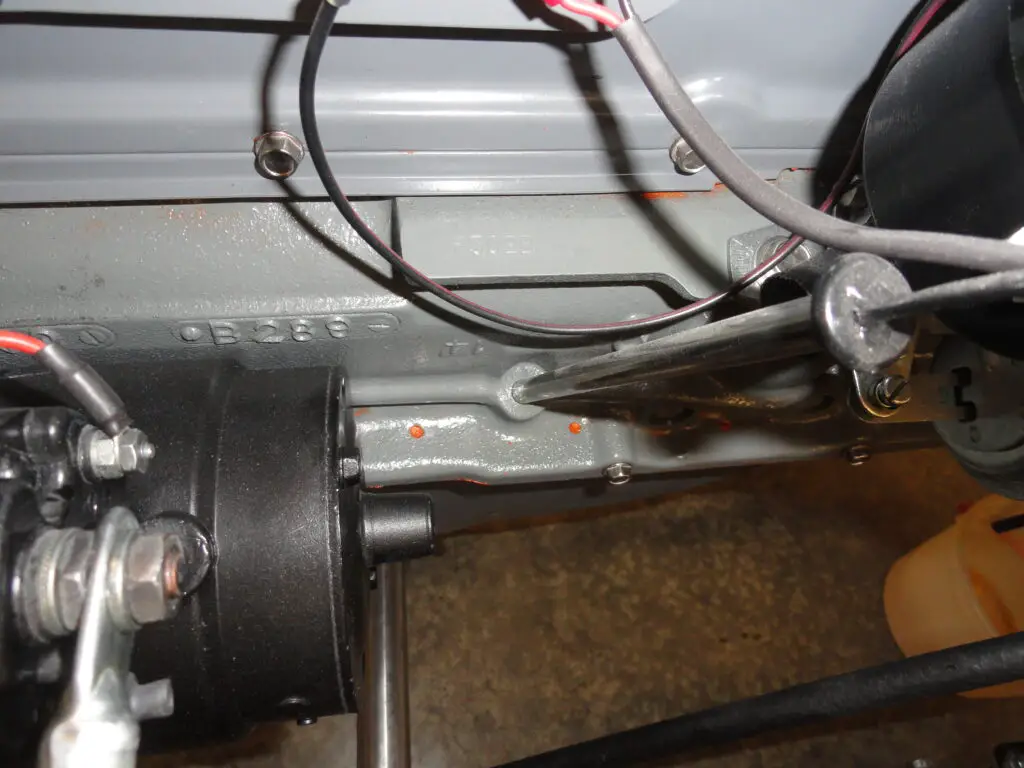To identify a GM 6-cylinder engine, locate the engine code stamped on the engine block, usually near the front for inline engines or by the cylinder head for V6s. Cross-reference this code and any visible casting numbers with GM databases or parts catalogs to confirm the engine’s type, production year, and specifications.
General Motors (GM) has produced a wide range of 6-cylinder engines over the years, powering vehicles ranging from workhorse trucks to high-performance cars. Identifying these engines can be vital for maintenance, restoration, or performance upgrades. This guide delves into how to identify GM 6-cylinder engines by examining engine codes, casting numbers, and key design features.

Contents
Why Engine Identification is Important
Knowing the exact GM engine in your vehicle is essential for:
- Maintenance and Repairs: Ensuring compatibility when ordering parts.
- Restoration Projects: Authenticating the engine for classic vehicle restorations.
- Performance Upgrades: Selecting suitable aftermarket components.
Common GM 6-Cylinder Engines
GM’s 6-cylinder lineup includes inline-6 and V6 engines, each with distinct features. Here are some popular models:
Inline-6 Engines
- Chevrolet Stovebolt 216/235 (1929–1962): Found in early Chevrolet cars and trucks.
- Chevy 250 (1966–1984): Known for its reliability in trucks and cars.
- Chevy 292 (1963–1990): A heavy-duty Chevy inline-6 popular in trucks.
V6 Engines
- Buick 3.8L (231 CID) (1962–2008): Used in cars like the Regal and Grand National.
- GM 4.3L V6 (262 CID) (1985–present): A workhorse found in trucks, vans, and SUVs.
- High Feature V6 (3.6L) (2004–present): A modern, efficient engine used in cars like the Cadillac CTS and Chevrolet Traverse.
GM 6 Cylinder Engine Identification Guide
Identifying a General Motors (GM) 6-cylinder engine can be done by examining various key features, including casting numbers, engine codes, physical characteristics, and production dates. Here’s a step-by-step guide to help you identify different GM 6-cylinder engines:
1. Locate the Engine Code
GM engines are stamped with an identification code that reveals essential details. The code is usually found on a machined pad near the front of the engine block.
- Inline-6 Engines: Look near the distributor or below the cylinder head on the driver’s side.
- V6 Engines: Check the block deck near the cylinder head or on the bell housing flange.
The engine code often includes:
- Prefix: Indicates the plant where the engine was manufactured.
- Suffix: Identifies the engine type, displacement, and application.
2. Find the Casting Number
The casting number is cast directly into the block and cylinder head.
- Common locations include:
- Inline-6: Rear of the engine block near the starter.
- V6: On the block’s side or rear.
Use an online database or GM parts catalog to decode the casting number, revealing the engine’s year, displacement, and production specifics.
3. Examine Engine Features
Physical attributes can also help identify the engine.
- Inline-6 Features:
- Long and narrow design.
- Overhead valve configuration in most models.
- Stamped steel or cast aluminum valve covers.
- V6 Features:
- Compact, shorter block with a “V” layout.
- Single or dual overhead camshafts in modern designs.
- Distributor location varies: rear (older engines) vs. coil packs (modern engines).
4. Identify by Vehicle Application
Cross-referencing the vehicle’s VIN (Vehicle Identification Number) with GM documentation can help pinpoint the engine type.
- 6th–8th Characters: Indicate the engine type and model year in most GM VINs.
5. Use Online Databases
Websites like GM Heritage Center archives or aftermarket parts databases often list GM engine casting numbers and their corresponding details. These resources are invaluable for enthusiasts and mechanics.

Examples of GM 6-Cylinder Engine Codes
GM 6-cylinder engines use a combination of alphanumeric engine codes to provide specific details about the engine’s configuration, application, and year of production. Here are some examples of common GM 6-cylinder engine codes and what they represent:
Chevy Inline-6 Example:
- Code: F0625AB
- F: Flint Engine Plant.
- 0625: June 25th production date.
- AB: 250 CID engine with manual transmission.
GM V6 Example:
- Code: T0521ZK
- T: Tonawanda Engine Plant.
- 0521: May 21st production date.
- ZK: 4.3L engine for a specific truck application.
Challenges in GM 6 Cylinder Engine Identification
Identifying a GM 6-cylinder engine can present several challenges, especially given the wide variety of engine families, configurations, and casting changes over the years. Here are some common challenges in identifying these engines:
- Worn or Illegible Codes: Older engines may have faint or missing markings due to wear.
Solution: Use casting numbers and physical traits as backup identification methods. - Engine Swaps: Vehicles may not retain their original engines.
Solution: Cross-check the engine block code with the vehicle’s VIN or build sheet. - Modified Engines: Custom builds may have altered features or non-standard parts.
Solution: Consult with experts or online forums for guidance on custom configurations.
Tips for Accurate Identification
To accurately identify a GM 6-cylinder engine, it helps to follow a structured approach and use various resources and techniques. Here are some tips to make the process more precise and reliable:
- Clean Thoroughly: Dirt and grime can obscure codes and numbers. Use a degreaser and a soft brush to reveal markings.
- Double-Check Sources: Always consult multiple references to verify engine details.
- Photograph the Engine: Documenting casting numbers and codes can help when seeking advice online or from professionals.
Related Article
Ford 6 Cylinder Engine Identification
Frequently Asked Questions
Here are some FAQs about GM 6 cylinder engine identification –
1. Where is the engine code located on a GM 6-cylinder engine?
The engine code is typically stamped on a machined pad near the front of the block. For inline-6 engines, look near the distributor. For V6 engines, check near the cylinder head or the bell housing flange.
2. What is the difference between an inline-6 and a V6 engine?
An inline-6 has cylinders arranged in a straight line, offering smoother operation, while a V6 has a compact “V” layout with two banks of three cylinders, allowing for a smaller engine bay.
3. Can I identify a GM engine using the VIN?
Yes, the VIN can provide engine details, particularly in the 6th–8th characters. Cross-reference the VIN with GM documentation for accurate identification.
4. What tools are needed for engine identification?
You’ll need a flashlight, degreaser, a soft brush, and sometimes a magnifying glass to locate and read engine codes and casting numbers.
5. What if the engine code is missing or illegible?
If the code is unreadable, use casting numbers or physical features like valve cover design, distributor location, or block shape for identification.
Conclusion
Identifying a GM 6-cylinder engine involves locating engine codes, decoding casting numbers, and examining key design features. Whether you’re restoring a classic Chevy or upgrading a modern V6, accurate identification ensures you choose the right parts and maintain the engine’s performance. With the resources and techniques outlined in this guide, you can confidently identify any GM 6-cylinder engine.